How To Prep For Aeration & Seeding
So you've scheduled your aeration and seeding with us. Awesome! We're so happy that you've chosen Top Turf to lead you in your lawn care journey....
4 min read
Quincy Kroeschell : 8/28/23 4:24 PM
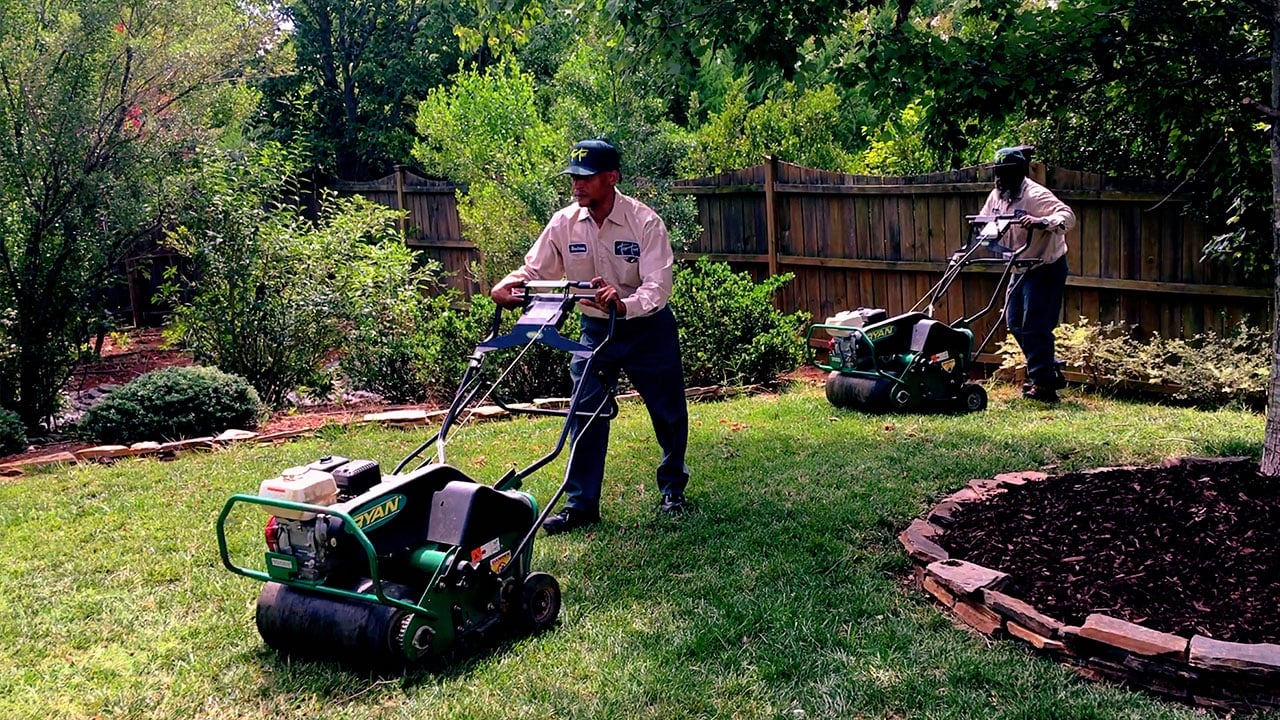
NOTE: Aeration and seeding is only effective for cool-season grass types, like Tall Fescue, in early autumn. Please see our Aeration & Seeding page for more details on cool-season lawn aeration & seeding. Warm-season grass types, like Bermuda and Zoysa, only receive core aeration, and do so in the spring. Please see our Core Aeration page for more details on warm-season lawn aeration.
Aeration and seeding are two lawn care practices that work hand-in-hand to improve the health and appearance of your lawn. Basically, aeration is a process of loosening the soil, which allows water, air, and nutrients to enter the soil and reach the roots of the grass. Not to mention, it allows for seeds to establish strong roots in the newly de-compacted soil! Those seeds then fills in bare or thin areas of the lawn with new grass. That's why these two practices are performed at the same time.
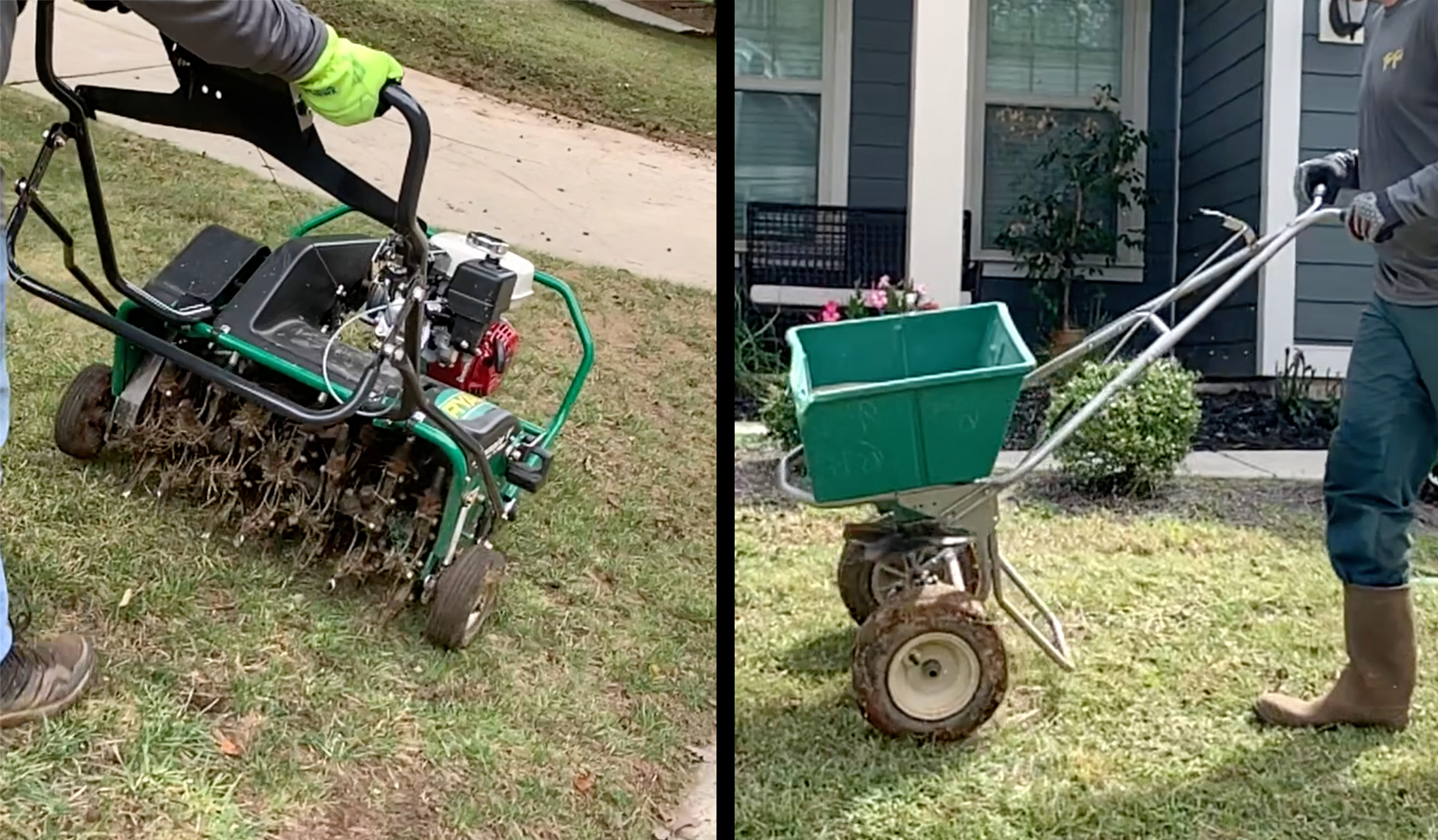
We could tell you that aeration and seeding are great for–
But let's dive into how aeration and seeding works, and why...
Soil compaction is a common problem that happens a result of temperature fluctuations, foot traffic, equipment usage, animal activity, and other factors. When the soil becomes compacted, it is dense and hard, making it difficult for air, water, and nutrients to penetrate the soil. It can also restrict the growth of grass roots as they struggle to push through the densely concentrated soil particles. Compaction leads to a variety of issues, including poor nutrient absorption, reduced oxygen levels, and weakened root development.
Aeration involves creating small holes in the soil, removing plugs to create space. If it sounds simple, that's because it is! The holes are punctured into the soil at a depth of 2 to 6 inches, depending on the soil density and the moisture in the soil. These small holes essentially create spacing for the grass to breath within the soil. Literally! This process also loosens the soil, making it easier for the roots to grow deeper, establishing grass that is there to stay. Not to mention, the deeper the roots, the greater amount of access to essential nutrients in deeper soil.
When there is a traffic jam on the expressway, driving is slow, inefficient, and everyone is unhappy. It's because there are too many cars and not enough space to move and breath like they're supposed to– you could say the cars are compacted. HOWEVER, when traffic is clear, or not compacted, driving on the expressway is easy, efficient, and everyone is happy! See what we mean? A little space goes a long way.
We use a core aerator machine– a tool that is specifically designed to remove small cores of soil from the lawn. Core aerators look similar to lawn mowers, but instead of cutting grass, they have a series of spiked, hollow tines that dig into the ground and remove plugs of soil from the lawn. We'll use our machines to aerate your lawn in a grid pattern, creating the holes, then overlapping those holes by about 50% on our next pass. That way, we make sure we create enough space in the soil without completely destroying the soil structure.
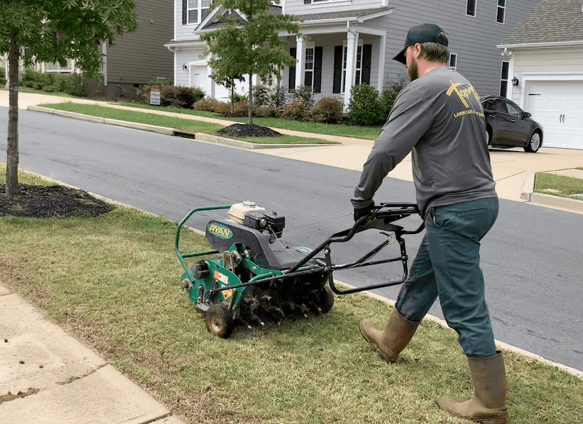
They may look unappealing, and you may be tempted to remove them from your lawn. However, we actually leave them on the surface of the lawn on purpose. They will slowly and naturally dissolve and decompose into the soil so they don't create more compaction. And, in doing so, they deliver additional nutrients to improve the overall soil quality.
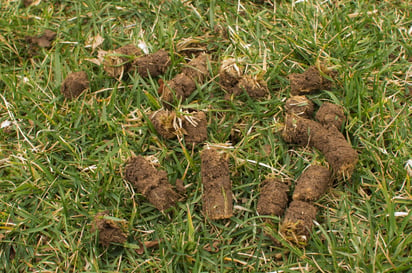
Tall Fescue grass is a popular cool-season grass type that requires annual seeding for optimal growth and health. The seeds fill in bare or thin areas of the lawn, resulting in thicker and more lush grass. Cool-season grasses, like Tall Fescue, suffer from long, hot summers because just that– they are a cool-season grass! When Tall Fescue gets burned out by the summer sun, there is no way to get it back except to reseed it!
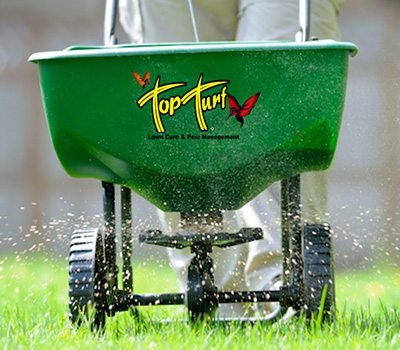
To maximize the growth potential of Tall Fescue grass, we employ a process called overseeding. Overseeding involves spreading additional grass seeds over the entirety of an existing lawn to promote denser growth of grass. Meaning, we do not remove any of your current grass, but we apply a blanket of evenly spread grass seed over your entire lawn.
The small holes that aeration creates in the soil act as pathways for essential nutrients and fertilizers to enter the soil system and reach the roots of the grass. Additionally, the loosened soil makes it easier for roots to grow deeper, accessing even more nutrients that may be present in the deeper layers of the soil. This improved nutrient absorption not only enhances the overall health of your lawn but also contributes to it's appearance as a thicker, lusher grass.
Grass roots need oxygen to breathe. When the soil is compacted, there is less oxygen available to the roots. This results in the roots staying shallow so they can access available oxygen near the surface, never letting the grass flourish due to lack of root depth. Aeration helps to increase the amount of oxygen in the soil, which helps the roots to grow deep and thrive.
When the soil is aerated, the roots of the grass are able to grow deeper, stronger, and more abundantly. That allows for less vulnerability to root competition with weeds, and really establishes the grass to be more drought-tolerant and resistant to pests and diseases.
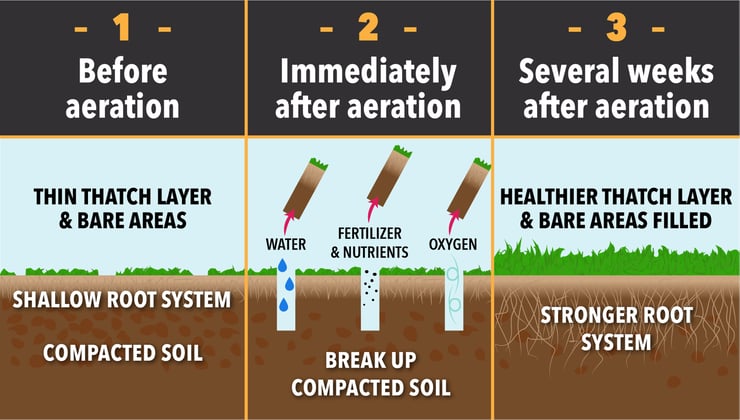
When the soil is compacted, water can't easily drain away. This can lead to water-logging, which can suffocate the roots of the grass. Aeration helps to break up the compacted soil, allowing water to drain properly.
Thatch is a layer of dead and decaying grass that can build up on the surface of the soil. It prevents water and air from reaching the roots of the grass. Aeration helps to break up thatch to alleviate this issue.
Aeration and seeding should be completed just once a year. The early autumn is the perfect timing, from late August to late October. After the long, hot summer, temperatures begin to cool down, which allows Tall Fescue seed to germinate and thrive. Then, it will be well established before the colder winter months. Come springtime, you'll have a full, gorgeous lawn!
If you are looking to get your lawn professionally aerated and seeded this fall, please contact us here at Top Turf! We are in 5 states across the southeastern United States, and we would love to give you the best gift ever– a wonderfully vibrant lawn!
Give us a call or fill out our form online here to schedule your Aeration & Seeding service with Top Turf!
Great! Check out these articles for more information about the preparations and aftercare of your lawn–
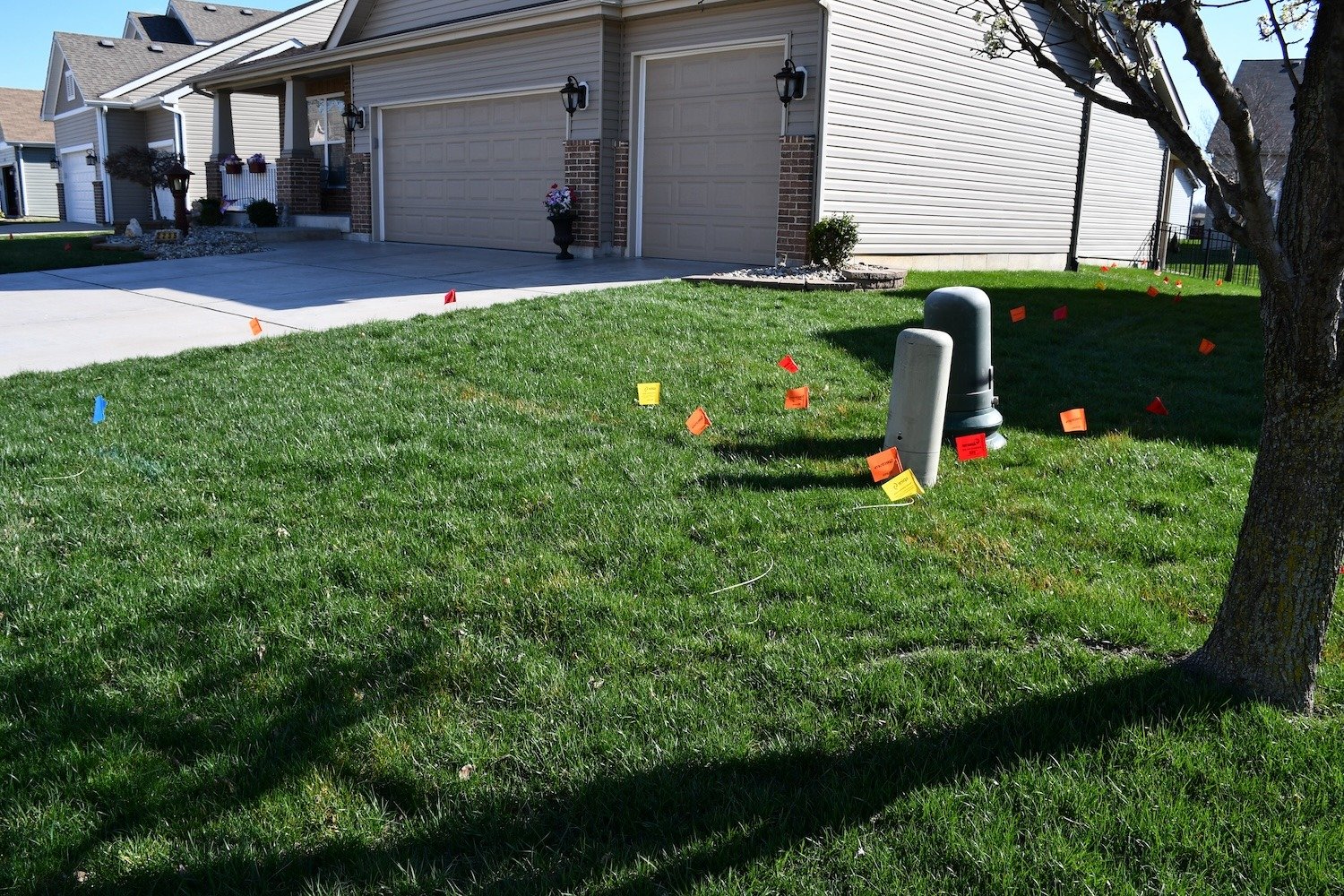
So you've scheduled your aeration and seeding with us. Awesome! We're so happy that you've chosen Top Turf to lead you in your lawn care journey....
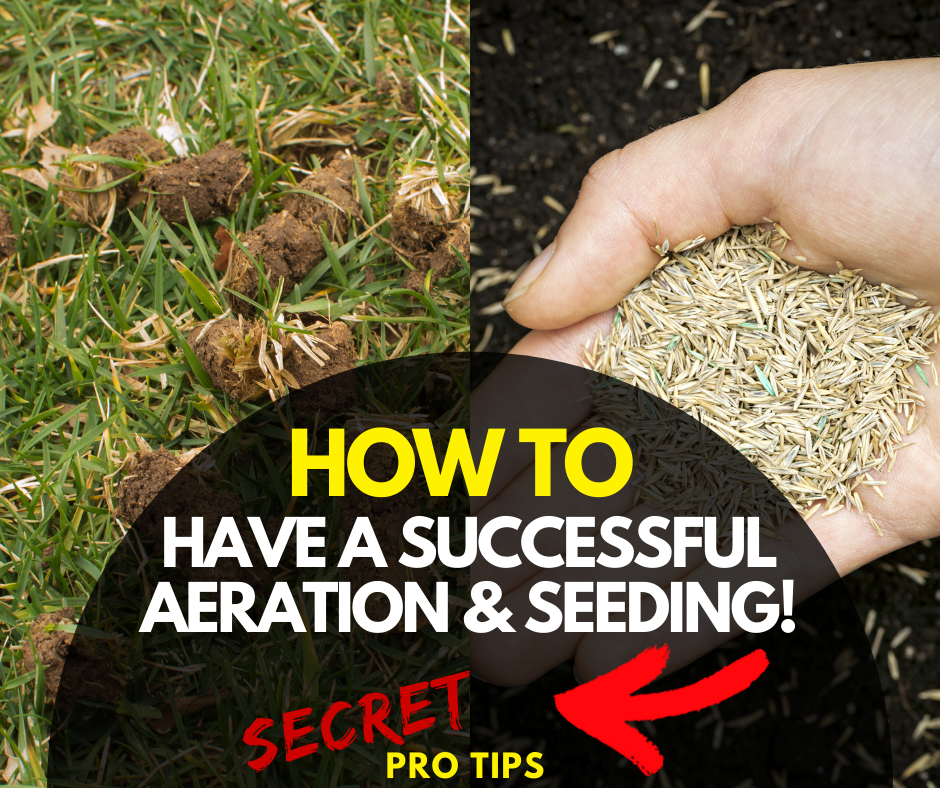
Just had your lawn aerated and seeded? Great news—you’ve taken the first step toward a thicker, healthier lawn! Now it’s time to make sure your new...
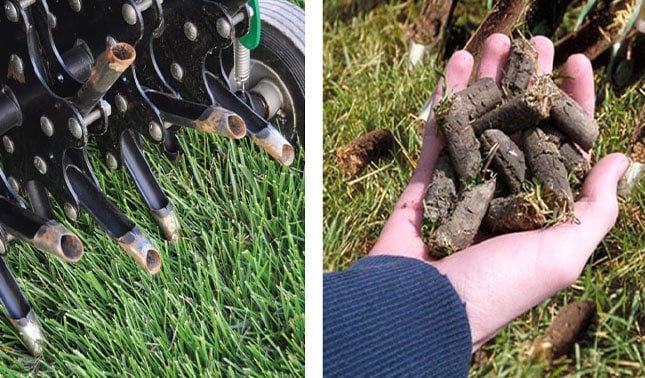
If you want a healthier, stronger lawn, aeration is a must! But when it comes to choosing core aeration or aeration and seeding, the right choice...